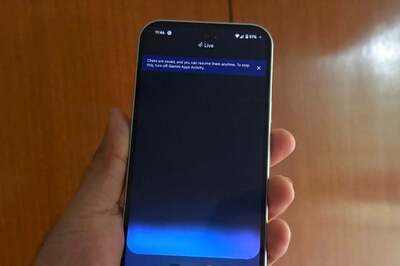
views
‘Goutam Buddha in History and Archaeology’, the latest book on the founder of Buddhism, has thrown light on some interesting historical as well as archaeological claims about the birthplace of the Buddha.
A joint effort by Dr Ajit Kumar Tripathy, P C Tripathy and C B Patel, the recently-released book sets the stage for debate on the issue which, so far, has remained more or less untouched.
The book reveals a stone epigraph of Kapileswar __ in Pali language and Brahmi script __ recording the visit of Emperor Ashoka to the birthplace of Buddha and exemption of land revenue to Lumbini area.
The epigraph was discovered in 1928 when it was sold to an antique collector Biren Roy for Rs 8. Roy did not gave it to the Collector of Puri despite directions from the governments of Bihar and Odisha. The Puri Collector, however, had explained non-acquisition of the epigraph saying it was not excavated from earth, sold below Rs 10 and was probably a transcript of Rumindei (Lumbini) inscription.
The stone epigraph, which found its way to Calcutta Museum, was studied and analysed by historians before it was lost, also makes important notes.
The book, published by Lark Books, says that the epigraph was different from the Lumbini inscription since it contained a clear reference to the year of demise of the Buddha which no other inscription of that period did. It also contained the name of the official who had proclaimed declaration of the visit of Ashoka, his erection of a stupa, a pillar and exemption of land revenue. “These two aspects clearly established that whatever it could be, the Kapileswar inscription was neither a forgery nor a copy of the Lumbini inscription,” says Tripathy, now the State Election Commissioner.
The book also looks at how the archaeological evidence in the form of inscription discovered by Dr Fuhrer in 1898 in Nepal’s Tarei, a place near Padaria, claming to be Rumindei, was later disowned by the Archaeological Survey of India itself.
The book, which seeks to take the lid off the myths, historical distortions and fabrications, also sums up research findings, made after the Lumbini discovery, up to 2008 to lay claim to the fact that it was Kapileswar and Kapilaprasad region of Bhubaneswar’s Old Town, and not Rumindei in Nepal, which is the birthplace of the Buddha.



















Comments
0 comment